Japanese Garden
We had a tour of the Japanese Gardens this morning, and I learned a lot, at long last, about what the Japanese garden aesthetic idea is – why there are rivers of gravel, for instance, and why rocks are parked all over them.
Singapore’s Japanese and Chinese gardens were planned in the 1960s and built in the 70s, when it became clear that the swamps of Jurong were going to be transformed into Singapore’s industrial zone. Even before independence from Malaysia, the city planners knew that people in the western end of the island would need green spaces, recreation, and something to look at that was not warehouses, factories, or oil refineries. They built the Jurong Bird Park, which I’ve treated elsewhere, and the Chinese and Japanese Gardens. Here are some pictures from the Japanese Garden, whose raison d’etre is to give local people a place to go for peace and tranquility.
 The building behind is an open-walled traditional Japanese guesthouse. It was full of people meditating and kids having a picnic when we walked by; you can reserve it from the Jurong Town Corporation for special events. But most people just use it for reading, relaxing, sheltering from the rain, and looking out at the various vistas.
The building behind is an open-walled traditional Japanese guesthouse. It was full of people meditating and kids having a picnic when we walked by; you can reserve it from the Jurong Town Corporation for special events. But most people just use it for reading, relaxing, sheltering from the rain, and looking out at the various vistas.
 Here’s a stone lantern near that same pond. Traditionally these were used to light up the margins of gardens’ water features. I’ve never seen one alight, though. And unlike the Chinese Gardens, the Japanese Gardens don’t host a lantern festival in the Autumn Moon period, so they retain their tranquility.
Here’s a stone lantern near that same pond. Traditionally these were used to light up the margins of gardens’ water features. I’ve never seen one alight, though. And unlike the Chinese Gardens, the Japanese Gardens don’t host a lantern festival in the Autumn Moon period, so they retain their tranquility.
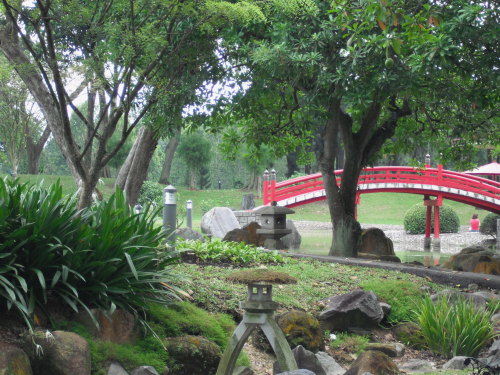 There’s a Stone Lantern Valley in the Japanese Garden, and it contains award-winning lanterns. You can see the one in the foreground here has an innovative base, but its lid has sprouted a Singaporean crop of moss and various plants. I don’t know who carves the lanterns to enter into the contests for the awards, but perhaps they’re connected with the huge biennial Garden Show.
There’s a Stone Lantern Valley in the Japanese Garden, and it contains award-winning lanterns. You can see the one in the foreground here has an innovative base, but its lid has sprouted a Singaporean crop of moss and various plants. I don’t know who carves the lanterns to enter into the contests for the awards, but perhaps they’re connected with the huge biennial Garden Show.
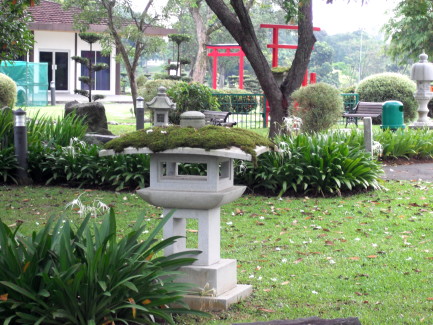 This lantern has the most impressive moss on top.
This lantern has the most impressive moss on top.
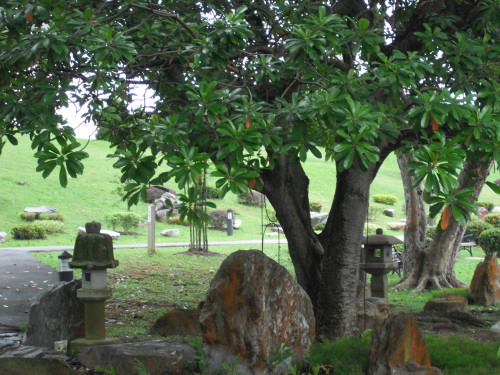 I like this view, with lanterns and trees.
I like this view, with lanterns and trees.
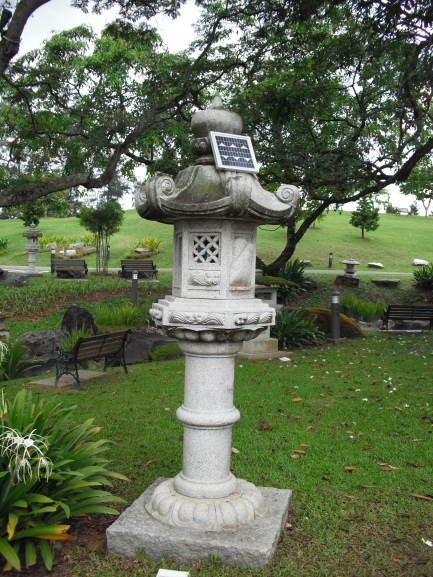 This, alas, is a Singaporean innovation – the solar-powered stone lantern. There’s gotta be a better way.
This, alas, is a Singaporean innovation – the solar-powered stone lantern. There’s gotta be a better way.
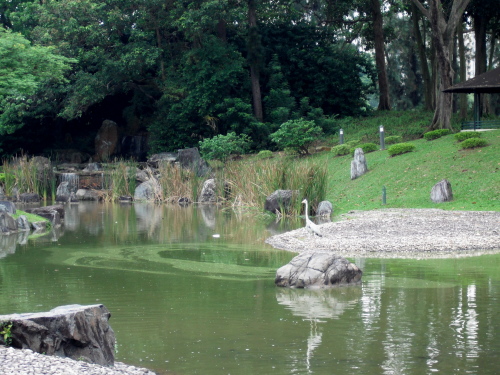 A final vista, with a crane. For a closeup of the bird, see my previous post.
A final vista, with a crane. For a closeup of the bird, see my previous post.